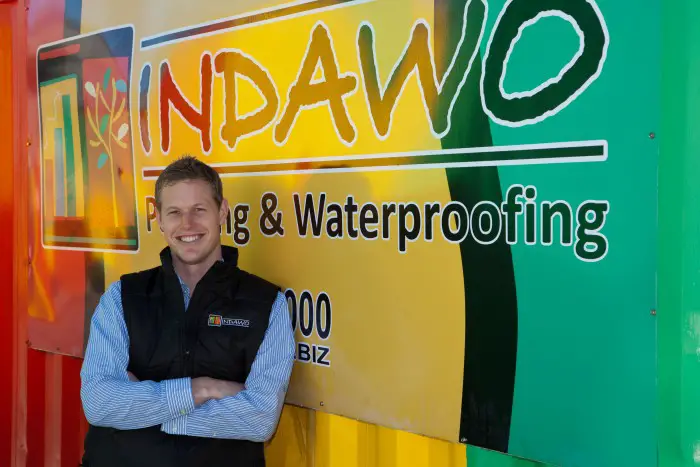Construction, along with mining, is one the most dangerous land-based occupations, exposing thousands of workers to risks daily. These risks are ubiquitous and highlight a plethora of hazardous materials and perilous situations. Working at heights, with heavy machinery, dangerous substances such as asbestos and sometimes explosives, this is an industry that has to have its wits about it. According to painting, waterproofing and construction company, Indawo, it is imperative that contractors pay attention to site safety and adhere to Safety, Health and Environment (SHE) files.
Indawo managing director, Geoffrey Jäcksays that failure to have a SHE file on site is against the law and exposes the contractor and the client to risks that have the potential of closing both businesses. Contractors and clients must be fully aware of these risks to workers. On top of the safety risks on site, contractors and clients need to understand all regulationsprescribed by the Department of Labour, the Building Industry Bargaining Council (BIBC) and the Occupational Health and Safety (OHS) Act,all of which provide for workers’ rights.
Construction workers engage in a number of activities, which expose them to hazards. These include falling from ladders or rooftops, exposureto electrical wires, machinery and equipment, tools, materials and dangerous substances.
Jäck stresses that workers must operate tools and machinery correctly and apply products according to manufacturers’ directions and specifications. Safety on site is critical. The onus is on the contractor to provide site staff training on Health and Safety aspects and how to manage risks on sites. This is where a SHE file is the most important document on any site.
SHE files contain accurate records of happenings on the site and record visits. Most importantly, SHE files document all information regarding site safety.
According to Jäck, leading hazards on sites are workers falling from heights, being struck by falling tools, materials and objects and electrical accidents.On top of this, there are a number of health related risks arising from the use of paint solvents over lengthy periods, dust and noise and, especially, asbestos fibres. It can be argued that in most instances, if instructions and precautions in the SHE file were adhered to, no accidents should occur on any site.
Safety in construction in South Africa has been under the spotlight for a number of years now and the Department of Labour, supported by organisations like the BIBC, with their focus on the overall well being of site staff, has taken huge strides in ensuring that sites are made safe.
The onus, however, remains on contractors who have to ensure that sites remain safe at all times. Compliance with the law relating to the employment of site staff and their safety is vital in the construction industry.
Jäckwarns though that this is where contractors may push the boundaries of the intention of the law. BIBC imposes regulations that are intended to protect the rights of workers and contractors who fail to toe the line will be found guilty of a serious offence and could face closure. Further to this, clients who use the services of non-compliant contractors face the same consequences.
Sites are dangerous zones. Uneven ground, holes, building materials, scaffolding, unprotected structures and general work in progress pose significant risks to injury. Strict adherence to safety principles is a must on all construction sites. The answer may appear simple in that following the law should prevent injury, however continuous and meticulous adherence to all safety measures, and constant attention to detail, is critical to not only prevent injury but to save lives on sites.
Jäck says that SHE files should never be taken lightly. It is the responsibility of the contractor’s client to ensure the health and safety of all on their site so they should insist on one. It forms a vital part of every construction project and if the contractor is unable to provide one, any reputable health and safety consultant will be able to.
Indawo Painting and Waterproofing can be contacted on 021 941 5000 or email [email protected].
Disseminated by, Shaun: Identity BrandTalk
On Behalf of; Geoffrey Jäck Indawo

